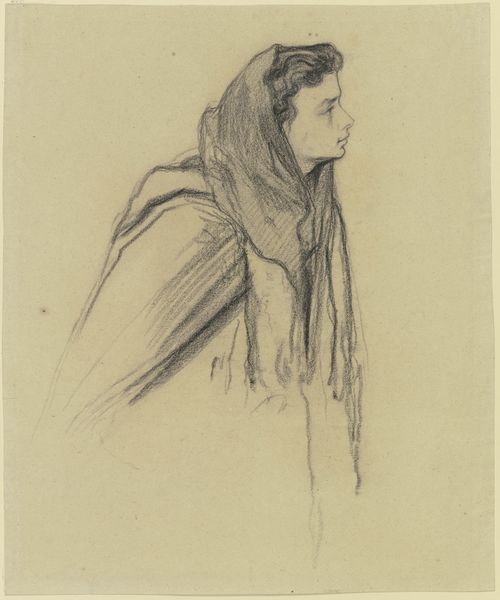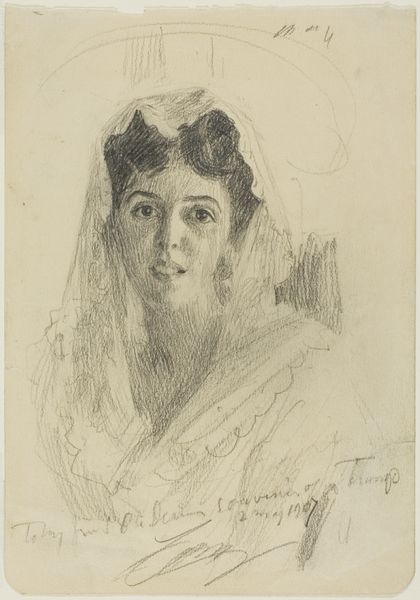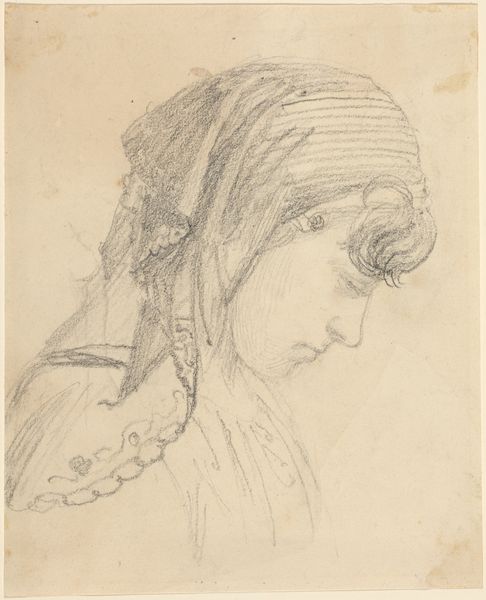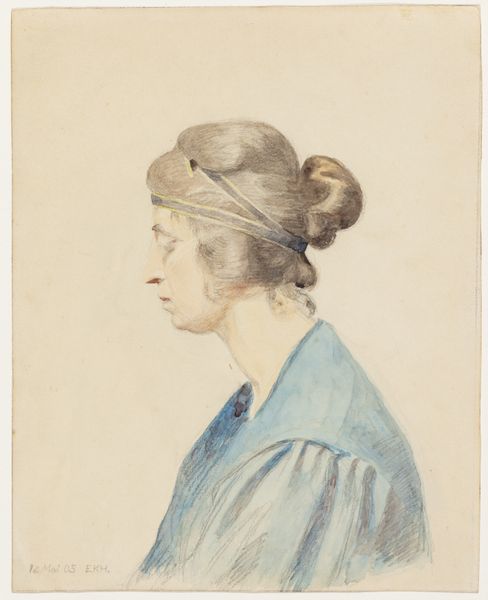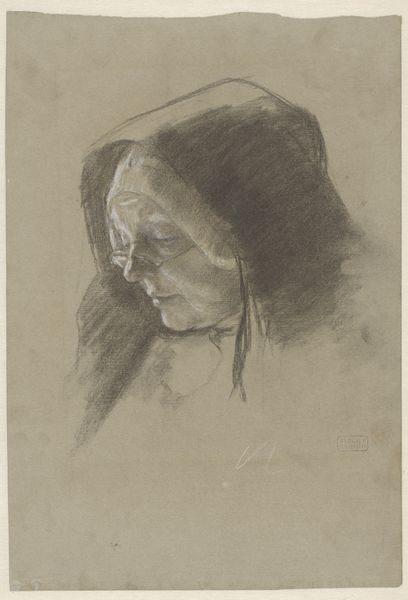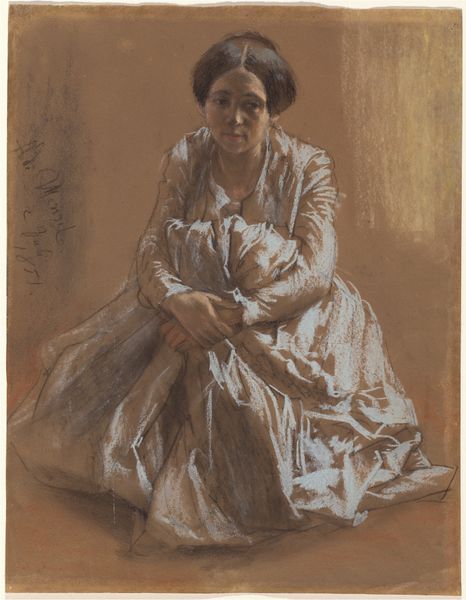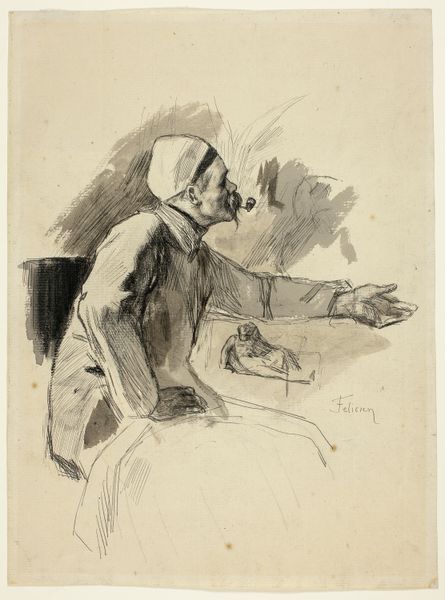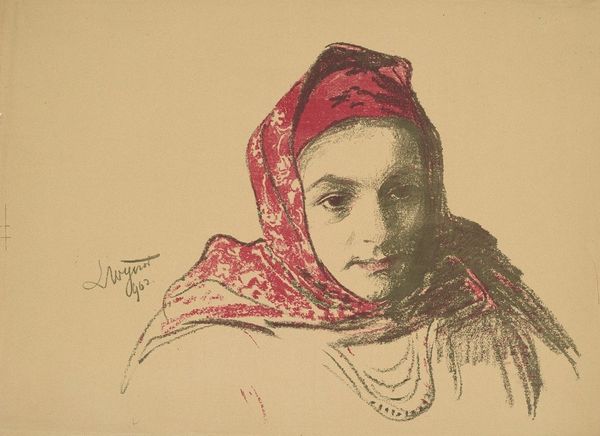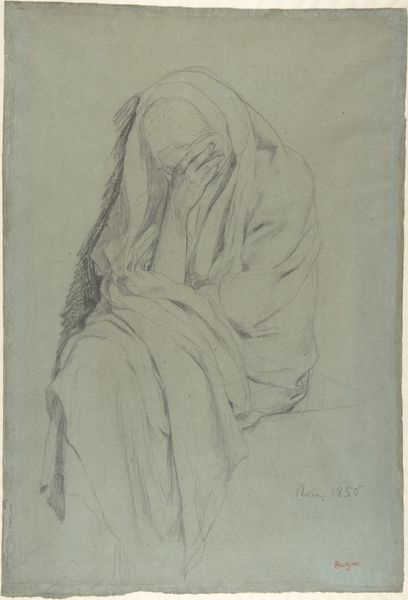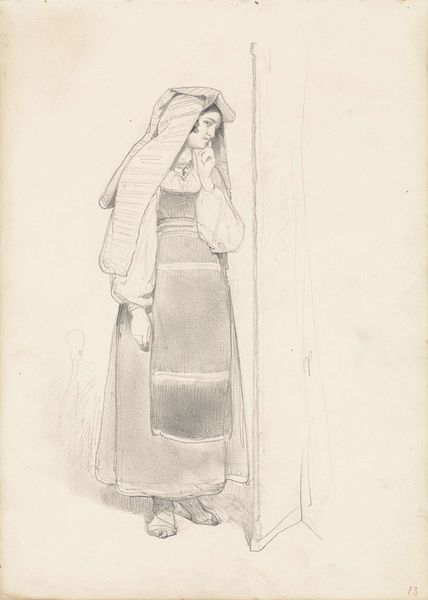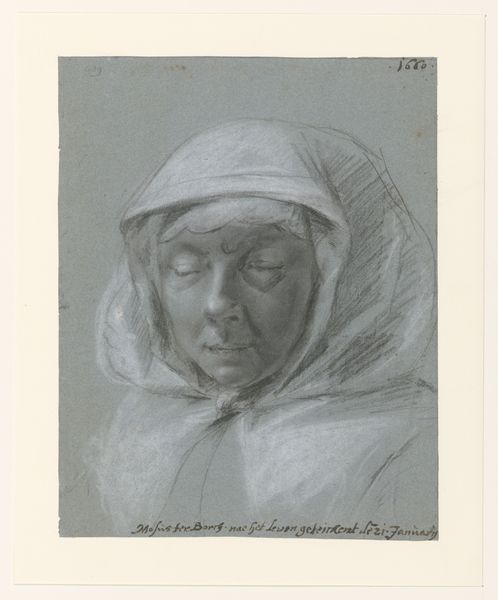
Dimensions: Sheet: 16 15/16 × 15 5/16 in. (43 × 38.9 cm)
Copyright: Public Domain
Curator: There's a subdued quality about this drawing, a sense of introspection. Editor: We're looking at "Head of an Arab," a pencil and graphite work by Isidore Pils, likely created between 1861 and 1866. It's currently housed at the Metropolitan Museum of Art. Pils was very much a product of his time, influenced by the Romanticism then in vogue. Curator: Introspection is right. He looks contemplative, almost burdened. His hand, posed against his face, suggests a heavy weight of thought. That pose has echoes throughout art history, doesn't it? A kind of shorthand for thoughtfulness or worry. Editor: Precisely! It draws from a long lineage of similar depictions. Thinkers and saints, portrayed throughout Western art. But Pils's portrayal exists in a moment of particular cultural fascination with the "Orient." Consider the way this "Arab" is rendered—there's an emphasis on the exotic, even in such a seemingly straightforward portrait. His headdress immediately marks him as “other.” Curator: It's hard to divorce these images from their colonial context, isn't it? Even with the intimate scale, Pils is undeniably presenting a type, not an individual. I wonder what the public reception to such works was. Did it reinforce or challenge existing stereotypes? Editor: The politics of imagery in the 19th century are so telling. His costume acts as a visual shorthand—embodying both a visual and ideological construct. Think of the visual cues from Delacroix that feed into this "Orientalism". What visual symbols and gestures resonate and create our understanding? Curator: It's striking how delicate the rendering is. The soft pencil work gives his features a gentle, almost vulnerable quality, that contrasts with the social framing of the image as something to be looked at and, potentially, controlled. The work on paper also alludes to the mobility of the image; one that may have circulated throughout France during this time. Editor: That soft handling creates a fascinating tension. This work makes one reflect on what such a common subject would symbolize and remind people during its time. Thank you for sharing these complex and sometimes, hard things, to reflect upon. Curator: Indeed, there's much to contemplate here about art's complicated relationship with history and power.
Comments
No comments
Be the first to comment and join the conversation on the ultimate creative platform.
